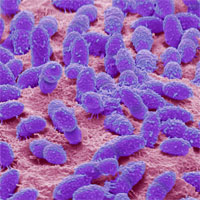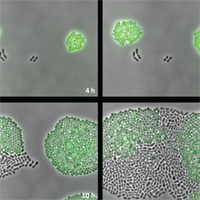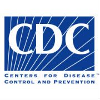Tag: infection

Is platelet transfusion associated with hospital-acquired infections in critically ill patients?
After adjustment for confounders, including patient severity and other blood components, platelet transfusion was independently associated with ICU-acquired infection. Further research aiming to better understand this association... read more

Disruption of the microbiota across multiple body sites in critically ill children
Microbiota in critically ill children differs sharply from the microbiota of healthy children and adults. Acknowledgement of dysbiosis associated with critical illness could provide opportunities to modulate the microbiota... read more

Waging War Against CABSIs
Catheter-associated bloodstream infections (CABSIs) are on the decline, according to the 2016 National and State Healthcare-Associated Infections Progress Report. The report, published by the CDC, showed that between 2008... read more

Antibiotic Resistance just became more complex
Bacteria that are susceptible to antibiotics can survive when enough resistant cells around them are expressing an antibiotic-deactivating factor. This new take on how the microbial context can compromise antibiotic therapy.... read more

New Blood Draw Protocol can reduce risks for pediatric patients
Researchers report that implementing a checklist-style set of procedures appears to cut almost in half the number of potentially unnecessary blood culture draws in critically ill children without endangering doctors'... read more

Tackling Antimicrobial Resistance
Antimicrobial resistance happens when bugs, like bacteria, fungi or viruses, change, or evolve, when they’re exposed to drugs, like antibiotics, antifungals, or antivirals. Bugs that develop antimicrobial resistance are... read more
Epstein-Barr risk increased by Immune Molecule Deficiency
Researchers from the National Institutes of Health National Institute of Allergy and Infectious Diseases, or NIAID, have found a genetic immune disorder causing increased risk and poor control of Epstein-Barr virus and EBV-associated... read more

Outsourced Hospital Cleaning linked to MRSA
Analysis of English NHS hospitals suggests that employing private as opposed to in-house cleaners is a false economy. While it may reduce costs, it could also raise risk of infection by methicillin-resistant Staphylococcus... read more

Think Sepsis and Act Fast
New attention to sepsis including revised definitions, updated guidelines, and new CMS reporting requirements aims to save lives through prevention and prompt and effective management of infections. CDC released a new Vital... read more

Blood culture decision algorithm tied to PICU admissions
A standardized approach to blood cultures in the pediatric ICU successfully reduced collections from central venous catheters, investigators at a single center reported, with no subsequent uptick in adverse events.... read more

Bacteriophages may harbor antibiotic resistance genes
Scientists at the Catalan Institute for Water Research have carried out a comprehensive analysis of several viromes from different habitats to explore whether bacteriophages (viruses that infect bacteria) harbor antibiotic... read more
Mild electric e-scaffold disrupts bacterial biofilms
Researchers at Washington State University (Spokane, WA, USA) used an e-scaffold made out of conductive carbon fabric and a mild electrical current to produce a low, constant concentration of hydrogen peroxide (H2O2, an effective... read more

Non-antibiotic treatments for bacterial diseases in an antibiotic resistance era
The progressive spread of antibiotic resistance genes is forcing us to reconsider our treatment options against some bacterial pathogens. Treating bacterial infections will likely become more challenging in the future. We... read more

Plazomicin Succeeds in Phase 3 cUTI and CRE Trial
Plazomicin an antibiotic being developed to fight multidrug-resistant bacterial infections, has met the primary objective of noninferiority compared with meropenem in a phase 3 registration trial among patients with complicated... read more

Severe Adult ARDS Prediction Models
Outcomes and survival prediction models for severe adult acute respiratory distress syndrome treated with extracorporeal membrane oxygenation. Although the use of ECMO for severe refractory ARDS has markedly increased since... read more

Therapy Implications for Immunomodulation After Ischemic Stroke
Despite significant advances towards a better understanding of the pathophysiology of ischemic stroke-induced immunosuppression and SAP in recent years, many unanswered questions remain. The true incidence and outcomes of... read more

The role of POC Diagnostics in Combatting Antibiotic Resistance
During the winter months, patients frequently present with respiratory symptoms like coughing, sneezing and fever that could be caused by one of several bacterial and viral infections including influenza, respiratory syncytial... read more









